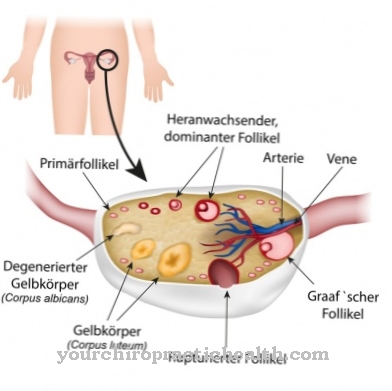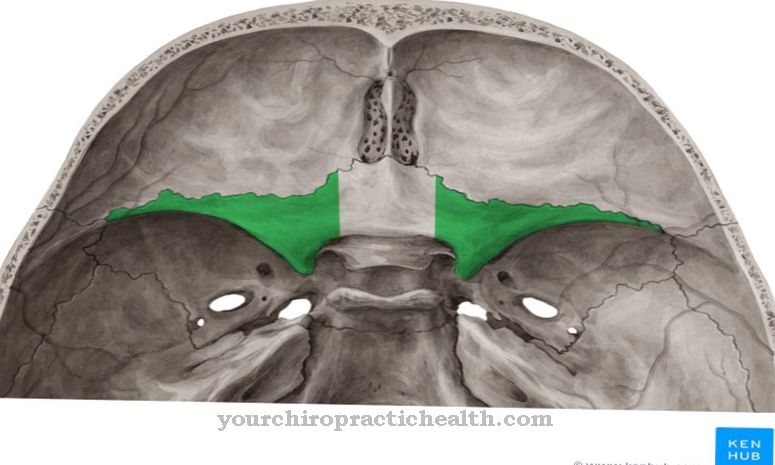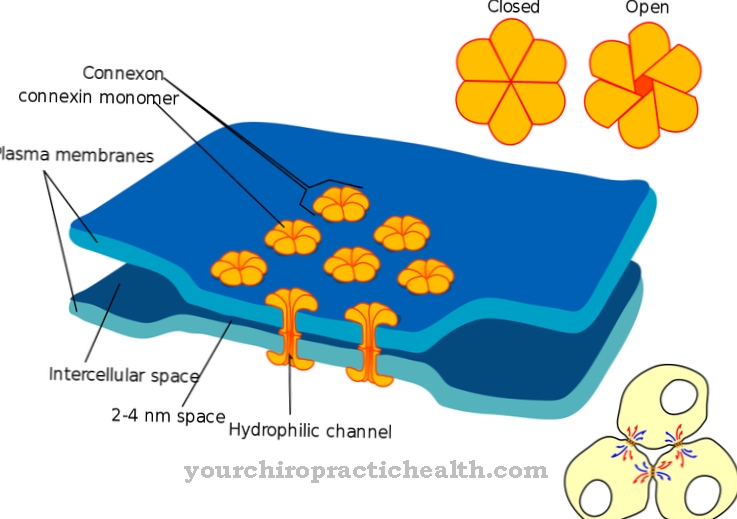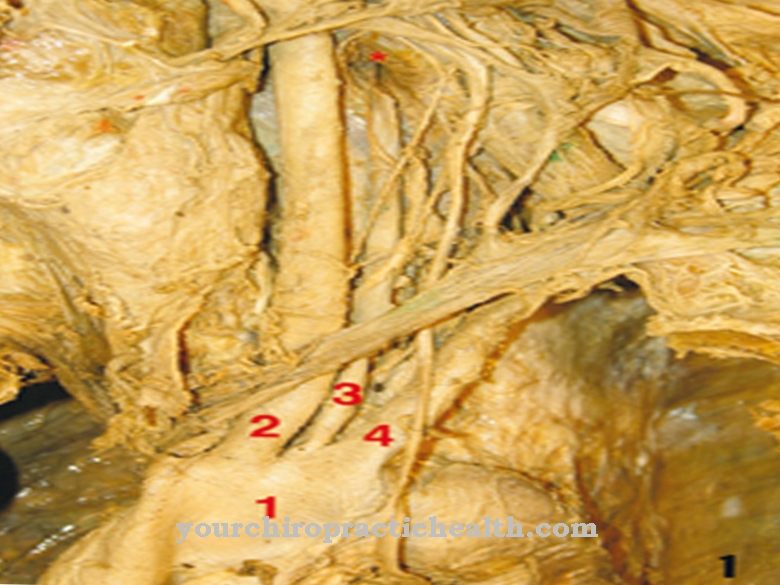The Mitral valve is one of a total of 4 heart valves. It separates the left atrium from the left ventricle. As a leaflet valve, the mitral valve consists of a front and a rear leaflet. It prevents the backflow of blood from the left ventricle into the left atrium during the systolic contraction of the ventricle. During the diastole (relaxation) of the left ventricle, the mitral valve is open so that oxygen-rich blood can flow in from the left atrium and the pulmonary vein.
What is the mitral valve?
The mitral valve, also called Bicuspid valve called, separates the left atrium of the heart from the left chamber (ventricle). Like the tricuspid valve, which separates the right atrium from the right ventricle, it is designed as a so-called leaflet valve with an anterior (cuspis anterior) and a posterior leaflet (cuspis posterior).
The mitral valve prevents blood from flowing back from the right atrium into the left atrium and pulmonary vein during systole (contraction). During the diastole (relaxation phase) of the right ventricle, the mitral valve opens and oxygen-rich blood from the lungs that has accumulated in the left atrium flows into the main chamber.In the subsequent systolic phase, the oxygen-rich blood is pumped through the aortic valve into the large bloodstream (body circulation). While a minor leak in the mitral valve is tolerated by the heart muscle, larger leaks lead to sensitive limitations in cardiac output (mitral valve insufficiency I to IV).
Anatomy & structure
The mitral valve is formed from two thin flaps of connective tissue (cusps), the anterior (cuspis anterior) and the posterior cusps (cuspis posterior). Both leaflets arise from the connective tissue-like reinforcement ring that lines the opening between the left atrium and the left chamber. When open during diastole, both cusps protrude into the left ventricle. When pressure builds up in the chamber (systole), the two cusps fold back, lie against each other and close the opening between the left atrium and the left chamber.
To prevent the cusps from turning inside out into the atrium, the edges of the cusps are connected with fine tendon threads (Chordae tendineae). The tendon threads arise from the papillary muscles, small protrusions of the ventricular muscles that contract synchronously with the ventricular muscles. During the systolic contraction of the chamber, the papillary muscles also contract, thereby tightening the tendon threads. They prevent the cusps from turning inside out in the left atrium, which could no longer prevent blood from flowing back into the left atrium and the pulmonary vein.
Function & tasks
The main function of the mitral valve is to allow the oxygen-rich blood that has accumulated in the left atrium to flow into the chamber during the diastolic relaxation phase of the chamber. During the subsequent systolic contraction of the chamber, the mitral valve must prevent the blood from flowing back into the atrium so that the blood can be properly pumped into the circulatory system (large bloodstream) via the aortic valve. The mitral valve could also be described as a passive flutter valve, which automatically reacts to pressure differences in front of and behind the valve.
The small mass of the two connective tissue lobes that make up the mitral valve makes the valve extremely responsive, so that the valve closes almost instantaneously if there is only a slight increase in pressure in the chamber. The light and thin “material” of the two leaflets would not withstand the pressure when closed and would turn inside out into the atrium with the effect of blood backflow. To prevent this from happening, the edges of the cusps are stabilized by fine tendon threads, which allow the mitral valve to open towards the chamber, but not to turn it inside the atrium.
To a certain extent, the tendon threads even react actively because they arise from the papillary muscles, small protuberances in the ventricular muscles that contract synchronously with the ventricular muscle culture. The process is somewhat comparable to the active belt tensioner principle of a car, in which the belts are pulled taut against the body in certain situations that suggest an upcoming impact.
Diseases
Mitral valve regurgitation and mitral stenosis are the two most important ailments and diseases associated with reduced functionality of the mitral valve. Mitral valve regurgitation can have various causes and is referred to as mitral valve regurgitation I, II, III or IV, depending on the functional impairment, with severity I being mild and IV being the most severe.
What all degrees of severity have in common is that the mitral valve no longer closes properly, so that there is partial blood backflow into the left atrium. The insufficiency can e.g. B. by tearing or shortening of the tendon threads that hold the edge of the two cusps, caused by a hole in one of the two cusps or by overstretching the tissue. Some forms of mitral stenosis, which manifests itself in a reduced blood flow from the left atrium into the left ventricle, are congenital deformities and undesirable developments. If z. B. has formed additional membrane-like connective tissue in the constriction located there above the mitral valve and obstructs the blood flow, it is a so-called supravalvular mitral stenosis.
Other forms of mitral stenosis lead to thickening of the valve leaflets, shortening of the tendon threads and direct adhesions between the leaflet edges and the papillary muscles. The valve leaflets are severely restricted in their mobility, there are leaks and partial backflow of the blood during the systolic contraction of the chamber. In rare cases, mitral valve atresia is found, which means complete closure, or the mitral valve has not been applied during embryonic development. In this case, it is part of hypoplastic left heart syndrome.
Typical & common heart diseases
- Heart attack
- Pericarditis
- Heart failure
- Atrial fibrillation
- Myocarditis













.jpg)

.jpg)
.jpg)











.jpg)